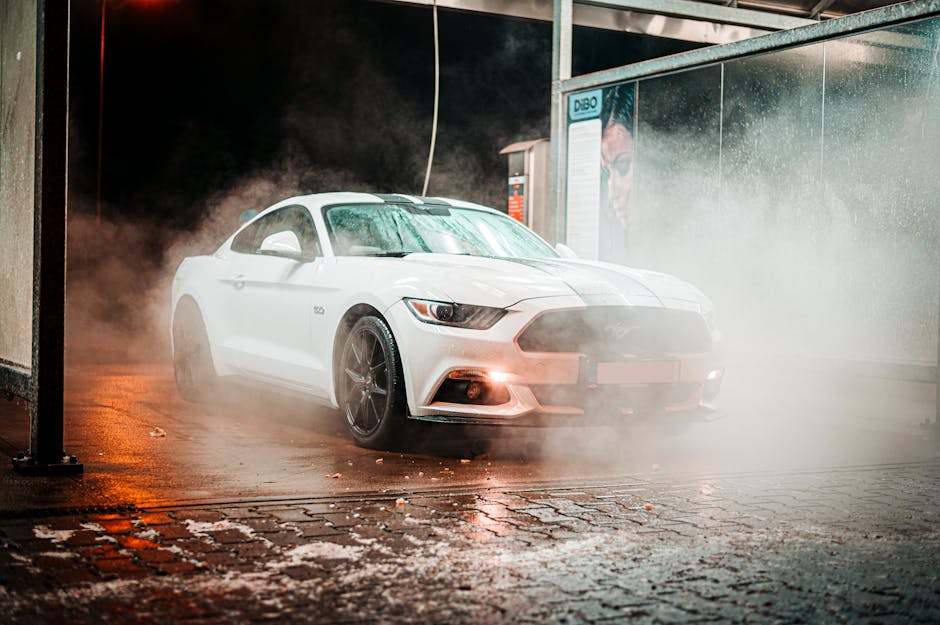 Swipe for more categories
Swipe for more categories 
Tips For Driving By Yourself For The First Time
Warning: Undefined variable $post_id in /var/www/dsw/wp-content/themes/DriveSmart_2024_v1.1/single.php on line 27
May 17, 2023
Warning: Undefined variable $post_id in /var/www/dsw/wp-content/themes/DriveSmart_2024_v1.1/single.php on line 75
Tips For Driving By Yourself For The First Time
Warning: Undefined variable $post_id in /var/www/dsw/wp-content/themes/DriveSmart_2024_v1.1/single.php on line 76
May 17, 2023
So, you’ve finally gotten your driver’s license, and it’s time for that very first solo drive. Congratulations! Driving by yourself can be quite thrilling, but it can also be intimidating, especially if you are doing it for the first time. Don’t worry – we’ve got you covered. In this blog post, we will share some helpful tips and tricks to make your first solo driving experience a smooth and enjoyable one.
From familiarizing yourself with your vehicle to mastering basic safety precautions, these essential guidelines will provide a solid foundation as you take on the exciting world of independent driving.
Plan Your Route in Advance

Planning your route in advance is crucial when driving by yourself for the first time. An unfamiliar road can lead to anxiety and increase the chances of an accident. To avoid this, take some time to research the best route to your destination.
Start by familiarizing yourself with the roads, traffic patterns, and any potential construction zones. You can use online resources, such as Google Maps, or a GPS navigation system to help you find the most efficient and safe route. This will make navigating new roads a lot less daunting.
Additionally, try to avoid peak traffic times on your first solo driving experience. This way, you can focus on building your driving confidence without being overwhelmed by heavy traffic.
Lastly, always have a backup plan in case of unexpected detours or road closures. Maintain a calm demeanor and remember that even experienced drivers face unexpected situations on the road. With proper planning, you will be better equipped to handle the challenges of driving by yourself for the first time.
Limit Distractions Within the Car

As a new solo driver, it’s crucial to limit distractions within the car to keep your focus solely on the road. Before setting off on your journey, make sure to adjust all mirrors, seats, and climate controls to your preference in order to avoid making these changes while driving.
Refrain from using electronic devices, such as smartphones or GPS systems, unless they are mounted and can be operated hands-free. Keep in mind that even hands-free technology can still divert your attention, so use them minimally and only when necessary.
Moreover, avoid eating or drinking while driving, as this can cause impairments behind the wheel. If possible, keep your drinks, snacks, and personal items in a secure place to prevent them from falling and distracting you.
In case an unexpected distraction occurs, don’t panic. Remain calm, safely pull over to the side of the road or find a parking spot to tend to the situation, and then continue driving once it is resolved.
Keep a Safe Distance from Other Vehicles

Driving solo for the first time can be both exhilarating and nerve-wracking. One crucial tip for a safe and comfortable journey is maintaining a safe distance from other vehicles on the road.
By keeping a safe distance, you allow yourself ample time and space to react to any unexpected situations, such as sudden braking or swerving by the car ahead. To determine an appropriate following distance, use the 3-second rule: when the car in front of you passes a stationary object, count “one-one thousand, two-one thousand, three-one thousand.” If you pass the same object before finishing the count, increase your distance.
Bear in mind that weather conditions, road surfaces, and traffic density also play a role in determining a safe following distance. For instance, during rain or snow, you should increase your following distance for better control and visibility.
With practice and experience, maintaining a safe distance will become second nature, allowing you to navigate the roads confidently and safely.
Adjust Your Speed According to Road Conditions
Driving for the first time on your own can be both exciting and intimidating. One essential tip when venturing out solo is to adjust your speed according to the road conditions you encounter.
In good weather conditions, maintaining the speed limit is generally safe. However, when facing rain, snow, or fog, it’s important to slow down and leave extra space between your vehicle and others on the road. Wet or icy roads can significantly reduce your tire’s grip on the pavement, leading to longer stopping distances and a higher risk of skids.
Another key consideration is adjusting your speed in response to heavy traffic or road construction. In these situations, it’s crucial to maintain a safe following distance and adhere to any posted speed limits or warning signs.
Overall, being aware of your surroundings and constantly adjusting your speed based on road conditions is an essential skill for first-time drivers, ensuring a safe and enjoyable driving experience.
Be Conscious of Road Signs and Traffic Signals

Taking the wheel for the first time can be both exciting and nerve-wracking. As a new driver, it’s essential to be conscious of road signs and traffic signals to ensure a safe and smooth driving experience.
Keep your eyes peeled for speed limit signs, as adhering to these limits will not only keep you safe but also help you avoid costly fines. Pay close attention to street signs that indicate one-way roads, no turn on red, or no parking zones to prevent accidents and ensure smooth traffic flow.
Traffic signals play a crucial role in managing the flow of traffic, so always remember to come to a complete stop at red lights and stop signs. Yellow lights signal that you should prepare to stop, and green lights indicate your right to proceed when the intersection is clear.
By staying aware of your surroundings and paying attention to road signs and traffic signals, you’ll be well on your way to master the art of driving solo with confidence.
Remain Calm and Stay Focused

Remain Calm and Stay Focused:
Taking a deep breath is crucial before setting off on your first solo drive. The anxiety of being behind the wheel alone can unduly impact your driving abilities, so staying focused is vital. Pay attention to the road and keep distractions at bay to ensure a safe and smooth ride.
Consider turning off your phone or putting it on silent mode to avoid being led astray by text messages or phone calls. Staying alert and carefully monitoring the road conditions, traffic signals, pedestrians, and other vehicles will help you react timely and make appropriate decisions.
By maintaining a calm demeanor, you will gain confidence while driving alone for the first time and will soon become proficient at navigating the open road safely. So, breathe deeply, focus on the task at hand, and enjoy the newfound freedom of solo driving.
Use Your Mirrors and Blind Spot Monitoring

Driving solo for the first time can be an exciting yet nerve-wracking experience. One crucial aspect of driving safely is to consistently utilize your vehicle’s mirrors and blind spot monitoring systems.
Before hitting the road, adjust your side mirrors and rearview mirror to have a clear view of the surrounding traffic. Periodically check these mirrors while driving, ensuring you maintain an awareness of the cars around you.
Most modern vehicles come equipped with blind spot monitoring systems which provide an additional layer of safety. These systems help detect when a vehicle is in your blind spot – an area difficult to see using mirrors alone. Pay attention to any visual or audio alerts from your vehicle when making a lane change or merging.
Remember, even with advanced technology, always perform a shoulder check to verify your blind spot before changing lanes or making sudden moves. Regular use of your mirrors combined with blind spot monitoring will boost your confidence and road safety while driving alone.
Practice Defensive Driving

Practice Defensive Driving
One of the most important aspects of driving by yourself for the first time is practicing defensive driving. Defensive driving means being aware of your surroundings, anticipating potential hazards, and taking necessary precautions to avoid accidents.
To begin with, always keep a safe distance between you and the vehicle in front. This will give you ample time to react to any sudden stops or changes in traffic conditions. Additionally, make sure to check your mirrors frequently to stay aware of what’s happening around you.
Try to anticipate the actions of other drivers, such as merging lanes or making turns, and be prepared to react accordingly. Remember, it’s not just about protecting yourself, but also ensuring the safety of others on the road.
Lastly, avoid distractions such as using your cell phone or changing the radio station while driving. Your focus should always be on the road ahead, especially when you’re navigating new experiences as a solo driver. By practicing defensive driving, you’ll build confidence and keep yourself and others safe on the road.
"> /var/www/dsw/wp-content/themes/DriveSmart_2024_v1.1/single.php on line 177
">
"> /var/www/dsw/wp-content/themes/DriveSmart_2024_v1.1/includes/quote-modal.php on line 8
">


